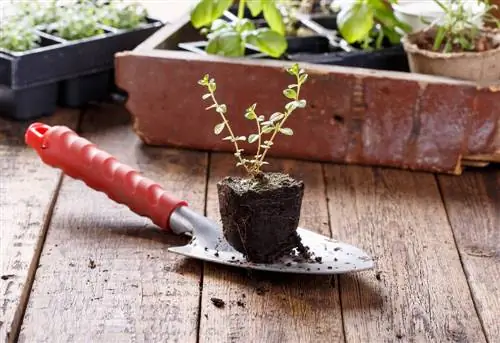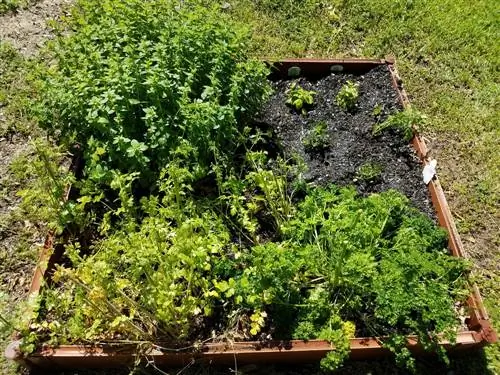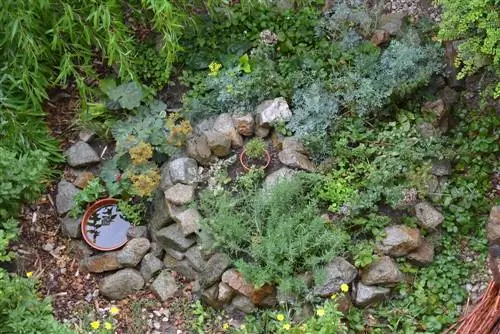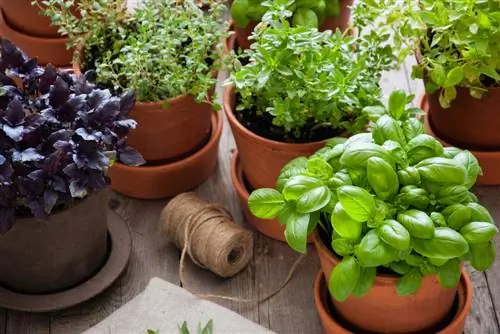- Author admin [email protected].
- Public 2024-01-10 23:11.
- Last modified 2025-01-23 11:19.
Herbs have always been part of the human diet. They refine our food and heal our ailments. A particularly attractive way to grow herbs yourself is the herb spiral. It was invented by Bill Mollison, one of the “inventors” of permaculture. Mollison has always been impressed by the Aboriginal people's ability to live in harmony with nature and to imitate the workings of nature. A frequently used Aboriginal symbol was the spiral. While looking for new ideas for garden design, Mollison finally came up with the idea of integrating the spiral shape into the garden - the herb spiral was created.
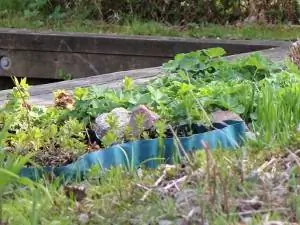
How do I plant a herb spiral correctly?
To optimally plant a herb spiral, place Mediterranean herbs such as thyme, sage or rosemary at the top, lemon balm, fennel, coriander and nasturtium in the middle and moisture-loving herbs such as chives, parsley and dill at the bottom.
Creating a herb spiral in your own garden is not difficult. Planting a herb spiral is fun. A quick image search on one of the search engines will provide some design ideas. If you like it a little “wilder”, opt for a spiral made of loosely stacked stones. The walls of a spiral designed in this way also offer enough shelter for insects and small animals. If you want something a little more accurate, you can also build the spiral out of neatly stacked bricks. There are almost no limits to the design possibilities.
What options are there for planting the herb spiral?
The big advantage of planting a herb spiral is the availability of different climate zones in a small space. Mediterranean herbs in particular feel at home at the top of the herb snail. Thyme, salvia, oregano, rosemary and marjoram love their place in the sun. Lemon balm, fennel, coriander and nasturtium are suitable for the middle range. The lower end of the herb snail should be reserved for moisture-loving, local herbs: chives, parsley and dill, for example, are herbs that are in good hands there. The small caves between the stones can also be planted with herbs.


